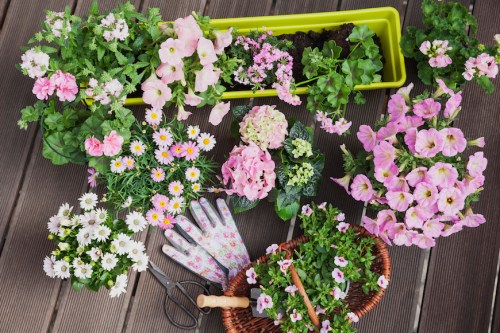No Garden? No Problem—Here’s How to Plant a Dazzling Window Box
Master gardener Angelo Randaci shares tips on planting a window box indoors and out—from finding the right planter to choosing plants.

While not all of us have a yard in which to grow a flower garden, there’s a world of horticultural opportunity right outside many of our windows… literally. Thanks to an array of window boxes and other hanging flower planters, it’s easy to create a stunning floral spread sans garden. Especially for those who live in a city and are tight on green space, planting a window box is an awesome alternative for bringing the outdoors in—or jazzing up a rusty fire escape.
Experts in This Article
horticulturalist for Earth’s Ally.
But picking the right window box can be tricky. Between size restraints, lighting opportunities, and location-based factors, knowing what kind of box to invest in can be confusing. Plus, you have to pick the right flowers. Turns out, not all plants “play nice” together, while others just won’t take to being planted in a confined space.
Luckily, Angelo Randaci, master gardener and horticulture expert for Earth’s Ally, is here to help. Below, Randaci breaks down the ins-and-outs of creating a dazzling window box, from planter choice to plants.
Here’s everything you need to know about planting a window box, according to a master gardener.
First up: Indoors or out?
The most important thing to consider when planting a window box is simply whether it’s going to be inside or outside.
If you’re planting outside, your biggest decision will likely come down to what the planter is made of. “Plastic boxes are lightweight, but might be less durable than other materials,” says Randaci. “Wood boxes are easy to customize, but are prone to rotting. Terra cotta boxes are heavier, but won’t withstand cold weather.” Your best bet is something metal or fiberglass that can hold up against the elements.
When planting a window box inside, there are a few more factors to think about. For indoor window boxes, look for a space that receives bright, natural light. If you live in an urban area or apartment with limited sun exposure, it might be worth investing in supplemental lighting. Especially during the cold, winter months, a lil’ extra sunshine can help keep your flowers healthy. “Winter is the most challenging time of year because of shorter days, drafts from the window, and low humidity from heating systems,” says Randaci.
In addition to artificial light, he recommends keeping the thermostat at 60 degrees or above and using a humidifier to add moisture on dry days. “Pull the shades down or place bubble wrap between the plant and the window during cold extremes.”
Finally, whether you opt for indoors or out, your planter needs to be able to drain properly. Otherwise, the plants are prone to becoming waterlogged and rotting. Even if you’re inside, Randaci recommends getting a planter with drainage holes. Then, use a drip tray to collect water and protect your windowsill from water spots and mold.
Now, the fun part—picking your plants
Regardless of whether you have an indoor or outdoor window box, there are some general tips to keep in mind when picking your flowers. Not all plants work well in the same box, as lighting, soil, and watering conditions vary from plant to plant.
As a general rule of thumb, Randaci suggests placing plants with similar needs in the same box. “Keep sun plants together, shade plants together, and higher water needs plants together,” he says. So, if you’re planting succulents, don’t put them in the same box as begonias. “Succulent plants are subject to root rot from too much water, and plants requiring regular watering periods will wilt for from lack of water if planted with dry-loving plants.”
Randaci has some suggestions based on setting, too:
- For bright, indoor environments: Got a lot of natural light in your space? You’re in luck. “Your favorite culinary herbs will all favor a bright light exposure,” Randaci says. And if you’re not into herbs, try some sun-loving cacti or sprawling English ivy.
- For low-light environments: Fear not! Randaci promises hearty plants like snake plants, bromeliads, aloe, and pothos all thrive in indirect and low light. Plus, they’re pretty forgiving so it’s okay if you forget to water them every once… or twice… in a while.
- For outdoor environments: Outdoor plant selection depends on where the box is located, says Randaci. If it’s in the shade, he recommends impatiens, ferns and begonias. If it’s in the sun, flowers like petunias and zinnias will thrive. Another suggestion: Get creative with lower-growing or trailing plants that spill over the window box’s edges, like a sweet potato vine.
Also, keep in mind that your plants probably won’t stay the same size for long. “Some plants will quickly outgrow a small space and need more maintenance,” says Randaci. “Look for compact plants that will fit the size of your window box.” Your best bet is to talk to someone at your local nursery who can advise you based on your needs. That way, you can be sure your window box brings you joy for the long haul.
Sign Up for Our Daily Newsletter
Get all the latest in wellness, trends, food, fitness, beauty, and more delivered right to your inbox.
Got it, you've been added to our email list.










